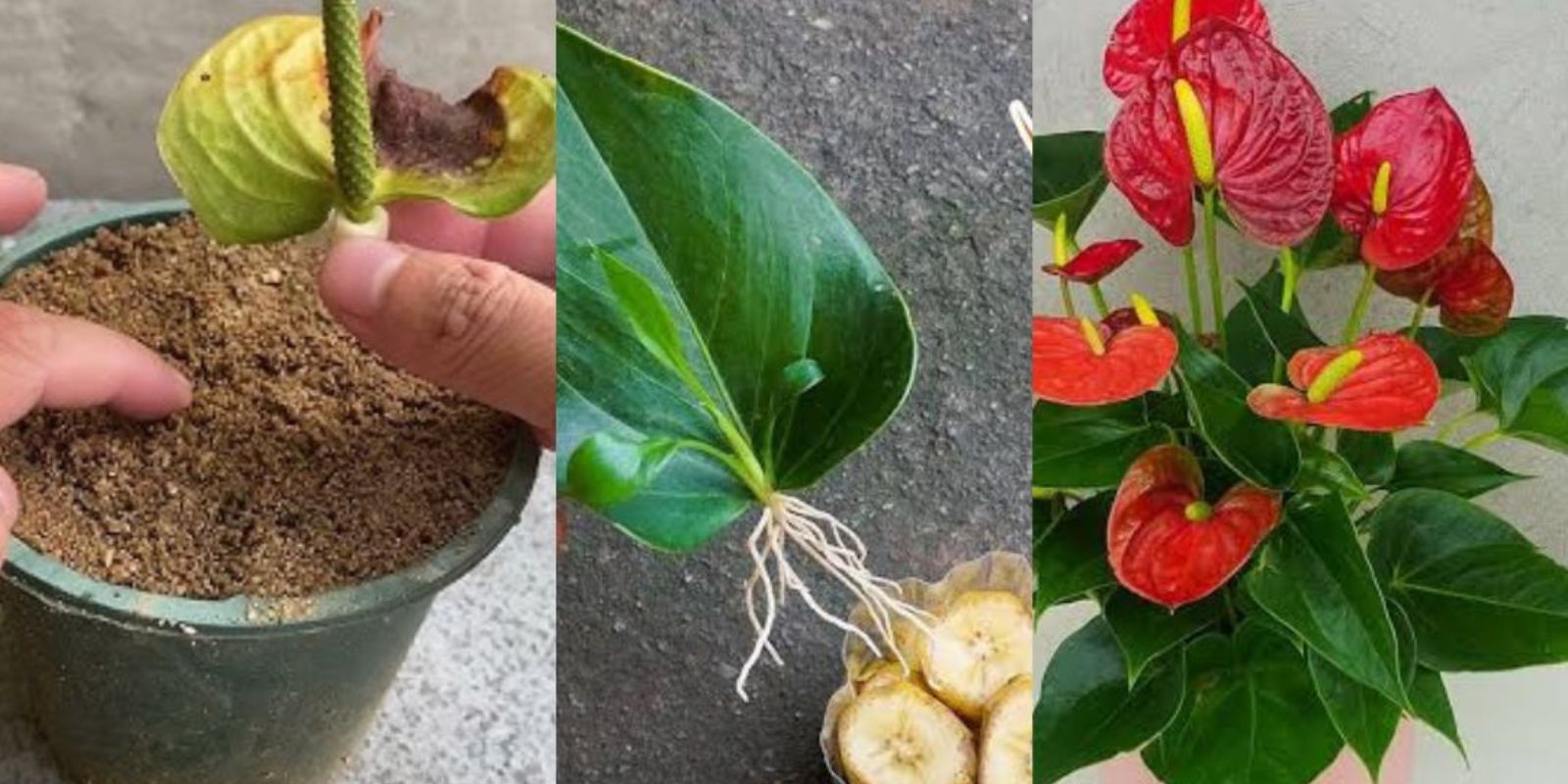Introduction
Anthuriums are iconic indoor plants, celebrated for their striking heart-shaped blooms and glossy green foliage. Their beauty makes them a favorite among plant enthusiasts. However, propagating these exotic plants can be intimidating for beginners. Enter garlic—a natural, easily accessible ingredient that can simplify the process and increase your chances of success. In this guide, we’ll explore how garlic can make propagating Anthuriums a breeze while keeping your plants healthy and thriving.
Why Use Garlic for Propagation?
Garlic is not just a culinary staple; it’s a gardener’s secret weapon. Its antifungal and antibacterial properties can protect plant cuttings from infections, ensuring they root more effectively. When applied to Anthurium cuttings, garlic helps prevent rot and fungal diseases that often hinder propagation success. Additionally, garlic stimulates root growth, making it an ideal natural rooting agent.
Understanding Anthurium Propagation
Anthuriums can be propagated in two main ways:
- Division: Separating clumps from the main plant.
- Stem Cuttings: Using healthy stems to grow new plants.
Using garlic works particularly well with the stem-cutting method, providing a natural boost to the cutting’s health and rooting potential.
Step-by-Step Guide to Propagating Anthuriums Using Garlic
Step 1: Choose a Healthy Parent Plant
Select a mature Anthurium plant with vibrant leaves and robust growth. This ensures that the cutting you take has the best chance of survival.
Step 2: Prepare Your Tools and Materials
You’ll need the following:
- Clean pruning shears or a knife
- One clove of fresh garlic
- A small container or pot with well-draining soil or coco peat
- Water spray bottle
Sanitize your tools with rubbing alcohol to prevent transferring diseases to the plant.
Step 3: Take a Stem Cutting
Locate a healthy stem with at least two leaves and visible aerial roots. Use your sanitized shears to make a clean cut about 2-3 inches below the aerial roots. Ensure the cut is smooth to reduce the risk of infection.
Step 4: Prepare the Garlic Treatment
Peel and crush a clove of garlic to release its natural juices. The garlic paste will serve as a protective and rooting agent. You can either directly rub the crushed garlic on the cutting or mix the garlic paste with water to create a dipping solution.
Step 5: Apply the Garlic to the Cutting
Rub the garlic paste gently onto the cut end of the Anthurium stem. This will protect the cutting from bacterial or fungal infections and encourage root development.
Step 6: Plant the Cutting
Fill a small pot with well-draining soil or a mix of coco peat and perlite. Create a hole in the center and insert the garlic-treated stem into the soil, ensuring the aerial roots are covered.
Step 7: Water and Maintain Moisture
Lightly water the soil to keep it moist but not soggy. Use a spray bottle to mist the soil if it begins to dry out. Anthuriums thrive in consistently moist environments.
Step 8: Provide Optimal Growing Conditions
Place the pot in a warm, humid location with bright, indirect light. Avoid direct sunlight, which can scorch the leaves and hinder growth. You can increase humidity by placing a tray of water near the plant or using a humidifier.
Step 9: Monitor Growth and Care
Check your cutting weekly for signs of new roots and leaves. In 4-6 weeks, you should notice new growth, indicating successful propagation. Continue to water and care for the plant as it matures.
Tips for Successful Anthurium Propagation
- Use Fresh Garlic: Freshly crushed garlic is most effective due to its high concentration of active compounds.
- Avoid Overwatering: Too much water can lead to rot. Keep the soil damp but not waterlogged.
- Monitor Humidity: Anthuriums prefer high humidity levels. Consider misting the plant daily or using a humidity tray.
- Choose Well-Draining Soil: Proper drainage is crucial to prevent fungal infections and root rot.
Why This Method Works
Garlic’s natural properties create an ideal environment for rooting. By preventing infections and boosting root stimulation, garlic acts as a natural, eco-friendly solution for plant propagation. This method is not only effective but also eliminates the need for chemical rooting hormones, making it perfect for organic gardening enthusiasts.
Caring for Your New Anthurium
Once your Anthurium cutting has rooted and begun to grow, treat it like a mature plant:
- Light: Place it in bright, indirect sunlight.
- Watering: Water when the top inch of soil feels dry.
- Fertilizer: Use a balanced liquid fertilizer every 6-8 weeks during the growing season.
Conclusion
Propagating Anthuriums using garlic is a simple, cost-effective way to expand your indoor garden. This natural technique ensures healthy cuttings, faster rooting, and thriving plants without the use of harsh chemicals. Give this method a try and watch your Anthurium collection flourish!
Get Involved!
Have you tried propagating plants using garlic? Share your tips and experiences in the comments below! Let’s grow together.

